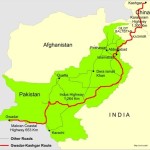 For more than quarter of a century I have been working as economic analysts. Later on I ventured into political economy and the new focus is geopolitical affairs. Ever since Pakistan and China have agreed to build China Pakistan Economic Corridor (CPEC) both the local and global investors are trying to understand the importance and economic implication of this project. Without going into too many details it may be said that CPEC is a game changer and those who get associated with the main and even peripheral projects now will enjoy the ‘early bird’ advantage.
For more than quarter of a century I have been working as economic analysts. Later on I ventured into political economy and the new focus is geopolitical affairs. Ever since Pakistan and China have agreed to build China Pakistan Economic Corridor (CPEC) both the local and global investors are trying to understand the importance and economic implication of this project. Without going into too many details it may be said that CPEC is a game changer and those who get associated with the main and even peripheral projects now will enjoy the ‘early bird’ advantage.
By this time it has become evident that China is developing two routes to minimize the distance covered by its imports and exports. These two routes have been termed ‘Silk Routes’, one on land and the other in waters. Let one point be kept in mind that various roads/railway tracks already exist, which are now being interconnected. Similarly, ports are already operating in almost all the countries, though enjoying different level of technology. Effectively China is creating interconnectivity and upgrading technologies under CPEC.
One of the most recent examples is commencement of a rail service that passes through various countries and offers the ultimate connectivity between China and Turkey. On the sea front two new ports are being developed; Chabahar and Gwadar. Chabahar is located in Iran and Gwadar is situated in Pakistan. The key objective behind construction of both the ports is to get access to land locked Central Asian countries, Russia and China. Other countries will also benefit from these ports and the biggest beneficiary is Afghanistan as it will get cost efficient connectivity for its transit trade.
If one looks at the map of the region, Pakistan can be rightly termed ‘natural corridor for trade and energy’ because two of the proposed mega gas pipelines; Iran-Pakistan-India (IPI) and Turkmenistan-Afghanistan-Pakistan-India (TAPI) will also pass through Pakistan. It is no secret that even today Pakistan offers the shortest and most cost efficient route to Afghanistan.
For ensuring the most efficient service, Pakistani entrepreneurs will have to focus on three key areas: 1) logistic, 2) warehousing and 3) collateral management services. I will admit it point blank that Pakistan is weak in all the three areas, mainly because of shortage of funds as well as lack of expertise. Therefore, the entrepreneurs are seeking joint venture partners, who have the capital as well as the expertise.
Pakistan’s central bank, with the help of multilateral donors, is also ready to offer loans on concessional interest rate. However, little success has been achieved as local entrepreneurs have not been able to get in touch with overseas investors. One of the reasons for the poor response from the overseas investors is that those are shy in investing in Pakistan, due to geopolitical condition of the region.
However, regional landscape is changing fast. China, Russia and United States seem to be arriving at the consensus that ‘enough is enough’ and for boosting the global economy policy must shift to cooperation from confrontation. Global downturn must be reversed and this will not be possible without establishing peace and tranquility in the region.
P.S. The foreign investors keen in locating joint venture partners in Pakistan are invited to contact us in locating a trustworthy business partner. They may send their queries at [email protected]